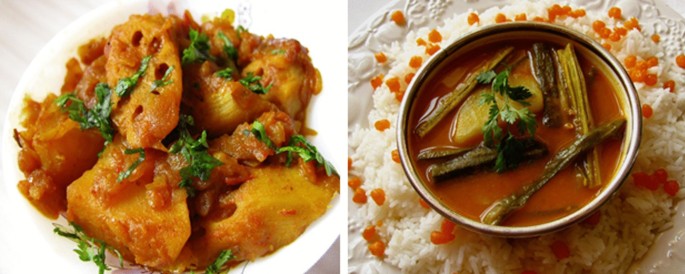
[Thattai Bhatia, a small diaspora largely settled in the Persian Gulf, originally migrated from Rajasthan in India and later from Thatta in Sindh, Pakistan. The research reveals the reasons behind their distinct foodways such as abstinence from consuming liquor, meat, garlic and onion in particular, despite their intermingling with different ethnicities due to migration]
Navreet Kaur Rana
Universiti Kebangsaan Malaysia
Introduction
History, in general, remains an endeavor to search the truth of oblivion of past in contemporary light. It helps to find newer avenues by excavating the treasure trove of a chronicled past. This also holds true for history of food, a discipline of scholarly interest for the last few decades. A surge in the number of monographs, cookbooks, infotainment and documentary format of food history programs has been noted recently. The roots of recording food his-tory are nearly as old as writing history itself. In the western tradition, Athenaeus of Naucratis documented in detail, ancient food habits in Deipnosophistae in the second century AD. Contemporarily, in the east, Meng Shen of T’ang dynasty wrote records of food consumed in court. In the South, Indian mythology records that the oldest and first ever book on cookery is Pakadarpanam (meaning the Mirror of Culinary Skills), written by the King Nala1 of the Nishada2 Kingdom. However, modern academic studies are estimated to have evolved around sixteenth century with Janus Cornarius’s De conviviis veterum Graecorum (1548) and J. Guglielmus Stucki-us’s Antiquitatum Convivialium(1583) following which, food history began to exist as an academic subfield. Regardless of the timeline, culinary jottings and cookbooks have always played an instrumental role in establishing cooking as a research methodology to study food-history. Scholars in the past also believed that cookbooks have been a source of information not only to understand the domestic, social, or gender specific roles but also material factors such as trade and network. Appadurai has considered cookbooks as humble literature of complex civilizations that publicizes particular traditions guiding the journey of food. In the same article, he also pointed out an important fact that cook-books seem to have come from royal and aristocratic milieus as they were the ones who could afford complex cuisines and had resources to record and document the cuisine. The “resources” he mentions here need further attention as they may not necessarily be restricted to financial facets. For the subaltern, the resource-worthy reasons which could be responsible for the absence of documented cuisine of common people could be non-existence of a functional writing system, migration—both circumstantial and trade related, small size of the com-munity, priority to sustain themselves, nomadic nature of their profession and geographical conditions among others. In this paper, the question under research is that—in cases where there is complete absence or paucity of documentation of any culinary regime due to one or several reasons stated above, can the contemporary culinary identity of the community becomes that method which can lead to untangling the threads of historical events? The study will establish that a backpedaled journey from the food on the plate to the origin can help define the culinary praxis of any community and can become a method to study history of the community. An apt example of one such community is the Thattai Bhatia Community. The details and the reasons to choose this community as a case study here are discussed in the next section.
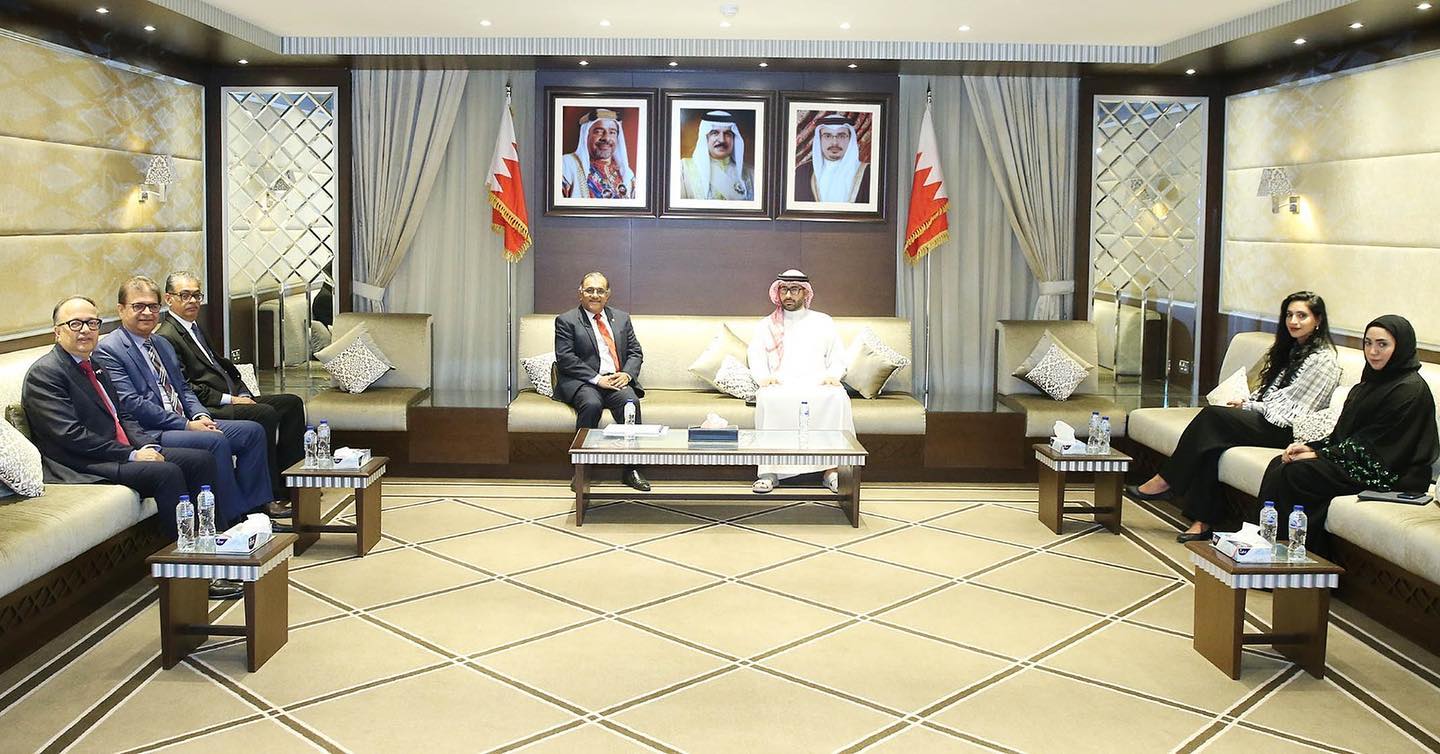
The Thattai Bhatia community
The community derives its name from a place where one of the most prosperous civilization once flourished, Thatta, on the banks of river Indus. Thatta, (located at 24° 45′ N and 67° 58′ E) means “river bank”3 was once a flourishing town but gradually declined by the end of nineteenth century and today exists as a dusty provincial backwater. The literature available on this community majorly addresses their trade relations and considers them as merchant diaspora but is largely silent on their life-style. One more reason why the community could not mark a distinct presence was because of their small size. (No proper census is done on the population of the com-munity. As per the web portal Bhatia.org, the population is estimated to be 5000.) They were overshadowed with either the Sindhi Hindu Community who also lived in Thatta and adjoining regions during the same period or with Lohana4 and Arora5 communities owing to the similarity in the nature of their profession. is fact is clearly visible in the works of Curtin, Dale and Lala. In the scholarly works of Curtin and Dale and the travelogue of Lala, the Sindhis are either referred to as merchants and Lohanas or baniyas. In fact, Schaflechner in his book about a Hindu temple (Hinglaj Devi) in the present-day Baluchistan clearly discusses the “absorption” of many other groups and clans in the Lohana community. He remarks that “Over the centuries, the Lohana community absorbed many other castes from the western part of the subcontinent.” It thus becomes difficult to isolate the cultural details of a smaller community in the recorded works. This essentially becomes another reason to choose their food and foodways to explore the history as Julia Darnton has stated that foodways are the windows into the culture and history of those who came before us. Theoretical background the process of tracing the journey of a contemporary cui-sine to its origin runs parallel to distinguishing a commutative relationship between food habits and community or region. This commutativity in relationship is achieved through identification. The food habits identify the com-munity and this relationship exists vice-versa. However, the notion of associating food with identity is not new. Mintz and Du Bois, in their extensive work on the anthropology of food and eating, have acknowledged “Eating and Identities” as one of the seven topics that illuminate symbolic value-creation and the social construction of memory. They state that “Like all culturally defined material substances used in the creation and maintenance of social relationships, food serves both to solidify group membership to set groups apart”. Just like the constituent elements of food make an impact on our physique, our constituent food habits make us recognizable in our cultural system, thus becoming our identity. [Derived from Tat- means bank of a river. The Sindhi word for river bank is Thatto. Thatta is also locally termed as Nagar Thato or Thatta Nagar. Sindhi Lohanas are further divided into Amils, Bhaibands, Sahitis and Ladii Lohana based on their profession, Mark-Anthony Falzon, Cosmopolitan Connections: The Sindhi Diaspora, 1860–2000. Belonging to a place called Aror also known as Arror, Alor or Arorkot is the medieval name of the city of Rohri in modern day Pakistan. The city once served as the capital of Sindh. Baniya, derived from Sanskrit word vaniya or vanijya, meaning finance or commerce. The Hindi word for traders is baniya].
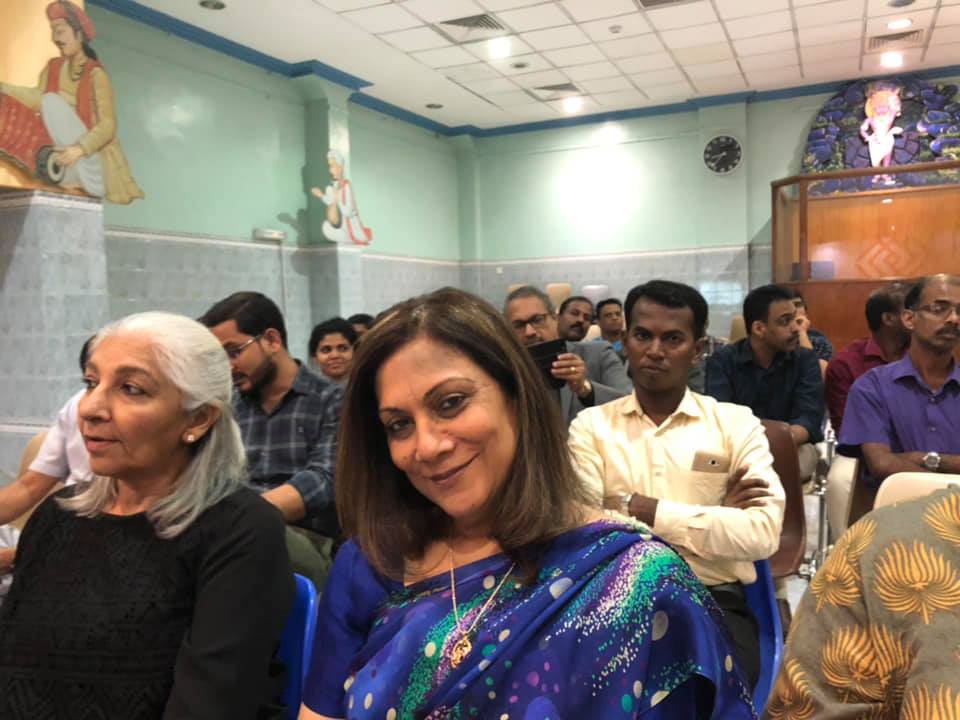
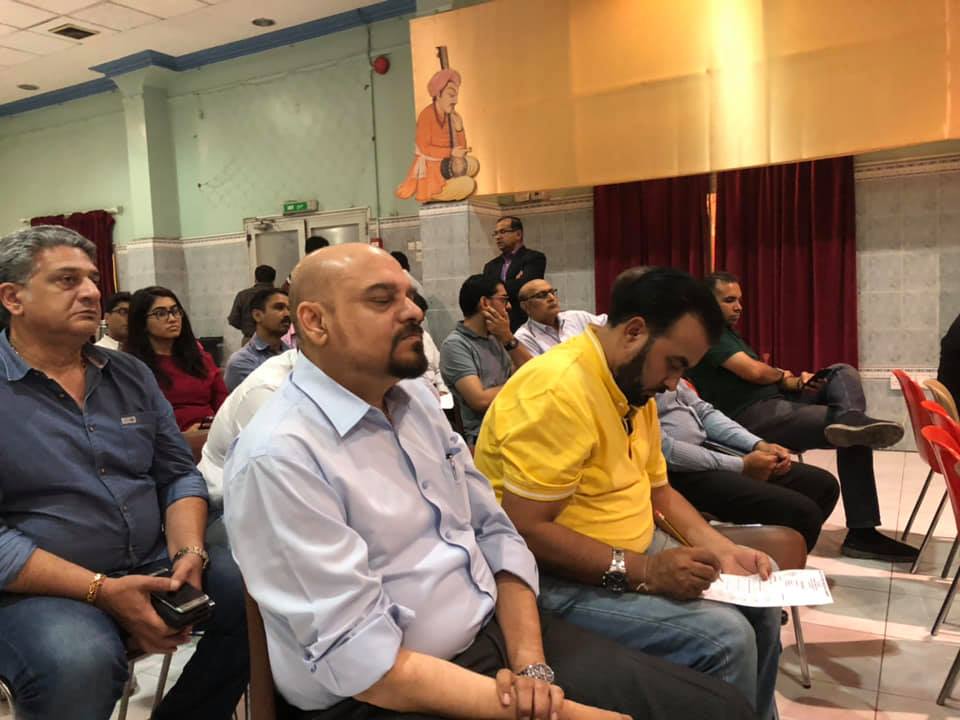
What is there on our plate on a regular day, is nothing but a symbolic representation of our food choices. Now, if there is a pattern in the symbolic representation of the food, it tends to become the identity of practitioner. The more concrete the patterns are, stronger is the association of the identity. Just as Geertz considered culture as “historically transmitted pattern of meanings embodied in symbols”, our cuisine has also travelled to us historically transmitting pattern of meaning embodied as dishes. Scholars in the past have done remarkable work in establishing a relationship between the foods people eat and how others perceive them and how they see them-selves. Anthropologists following Claude Lévi-Strauss, Jack Goody or Mary Douglas, and sociologists following Pierre Bourdieu, rightly stress how consumption decisions express the civilized state, establish personal and collective identity, and mark cultural and social differences. Whether it is the judgment of taste, as Bourdieu stated identifies a social order or the Culinary Triangle of Strauss, which emphasizes that culinary habits are interpretable, they both lead to identification of some sort. On the other hand, Mary Douglus in her work “Deciphering a Meal” partly disapproves of the Culinary Tri-angle but still continues to decipher a meal which means for her, food choices carry a meaning. She writes “If food is treated as a code, the messages it encodes will be found in the pattern of social relations being expressed”. There is enough scholarly literature on the establishment of the relationship of food and identity. The same identification also exists for the Thattai Bhatia community. They are recognized by their Sattvik food habits devoid of meat, alcohol, and onion. But the history behind the food choices remained in shadows. What has shaped their food habits to this? Or have they always been following these food choices? Why are their ethnic dishes similar to both Sindhi community and Rajasthan and Gujarat in India despite the fact they do not reside there? The rest of the paper indulges in finding an answer to these questions.
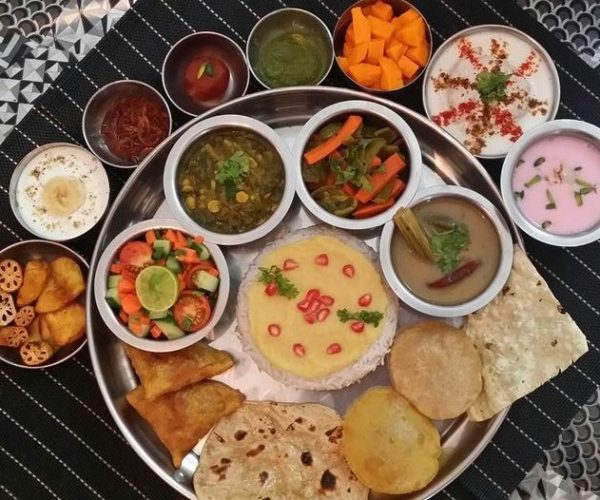 Research methodology
Research methodology
This research is a retrospective exploration of the causes, the effect of which have already occurred. The research will explore the history of the Thattai Bhatia community with the help of their food choices and establish that in the absence the documentation of culinary regime, culinary identity becomes the resource for historical exploration. The population sample under review is the contemporary members of the community who mostly reside in modern day Oman, Bahrain, Dubai, Muscat and Mumbai. Given the inadequacy of relevant literature, the author had to depend upon the in-depth interview of the community members. The guiding questions behind the choice of inform-ants were two—first that they belong to the Thattai Bhatia community and second that they are informed, cook or are involved in practicing their cuisine irrespective of their age and gender. The informants were limited in number because of the small size of the community, their presence on social media and their knowledge and interest in cooking. The members who whose responses are captured in this paper are referred to as informants henceforth. Since the informants were largely based out of another country, I first contacted them through social media and then exchanged several messages knowing about their cuisine. Initially, the interviews of small number of participants were not leading to conclusive outcomes but when all the informants who responded directed me to a local book which one of the community members had written, the research began to con-verge at a point. They also informed me that there is a website, which is an adaptation of the book titled Panhja Khada (meaning Our Food in Sindhi language). I, then contacted the author of the book, Mr. Bharat Chachara, since one of my other informants had referred to him as the “pioneer of the Thattai Bhatia community in Dubai”. He shared many distinct insights on their cuisine and foodways in an in-depth interview, which became the guiding light during the course of the research. The interview comprised of open-ended questions and was not based on any assumptions. The interviews were con-ducted in the first quarter of 2021.
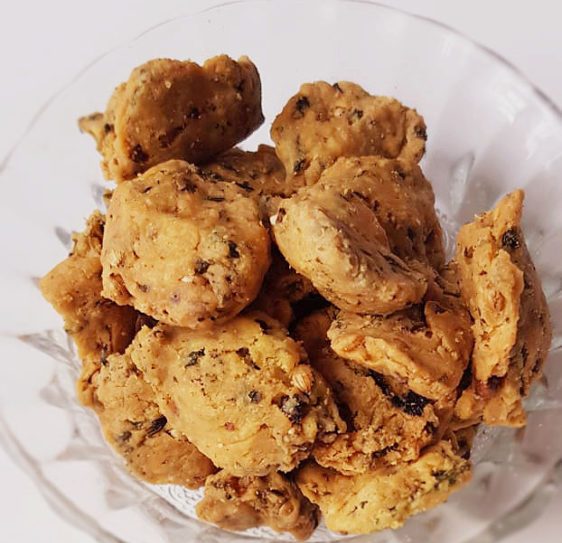 Results
Results
The key findings revealed that despite the fact that several features of the cuisine derive influence from the events in the history, the cuisine is actively practiced in Thattai Bhatia households every day. On asking that “if this is really the cuisine still practiced amongst the community members”, one of the informants responded affirmatively and said “Yes, very much. Cooked every day in all Bhatia household”. Another finding was the size of the population which the informant revealed that and “it is not more than 10,000 worldwide, however no formal counting or census has been conducted till date.” Regarding the literature available, he informed me that the physical copy of the book is available in Dubai and Mumbai only, but a digital copy is available on the website panjakhada.com and that it is a limited-edition book available only for private circulation. The informant also told me about a YouTube channel called “Buzzing Recipes” run by them that streams 3-min videos of the Thattai Bhatia recipes. The informant revealed that the younger generations today are accepting other “international cuisines like Chinese, Italian and Mexican” but at the same time are fond and aware of the Bhatia cuisine. Some of the houses strictly practice the ritual of Bhog Dharanu (discussed later) in their houses every day and annually celebrate the festival of Annakut (discussed later). The strength of this information lies in its source. e information is coming from those who practice this culture in their day to day life as a primary chore. Another factor that helped in converging the research is the uniformity in the responses. They all directed me to refer to PanjaKhada.com which became a deciding factor to interview its author. On the basis of the information pro-cured in the interviews, from the book and the videos, I was able to understand the ingredients and recipes of the food that makes it to their plates which was further tracked back into the history of the community. All arguments in the paper are supported with the historical facts available in the literature. In the following sections of the paper, the foodways of the community are discussed, their resemblance and dissimilarities from Sindhi and Indian (from Gujarat and Rajasthan) cuisine and through food the historical references are explored which have led to the formation of Thattai Bhatia cuisine to what it is as of today. In the later sections, the contemporary food choices of the com-munity members are discussed, followed by a conclusion. (Continues)
_________________
Courtesy: Research Gate – Published by Journal of Ethnic Foods in December 2021